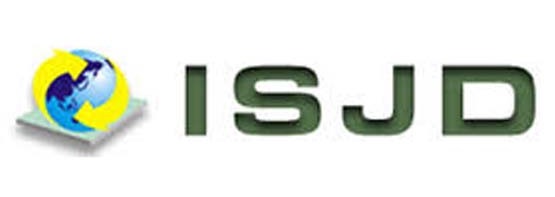HUBUNGAN NYERI TEKAN PERIKRANIAL DENGAN JENIS NYERI KEPALA TIPE TEGANG PADA REMAJA
Abstract
Abstract
Tension-type headache-TTH in children and adolescents is still an important problem in the world. Its prevalence varies with age and sex. The main impact of frequent and chronic TTH in children and adolescents is impaired quality of life, the risk of medication overuse, and the increase in the number of absent from school. The recurrent and chronic episodic TTH is associated with an increased incidence of pericranial tenderness.Children with TTH have an increased incidence of pericranial tenderness and increased pressure sensitivity. This study aimed to determine the association between pericranial pressure pain with tension type of headache in adolescents.This study was an analytic study with cross sectional design with purposive sampling method. There were 71 samples of 12th grade students of SMA Negeri 1 Padang who met the criteria of inclusion and exclusion. The diagnosis of tension type headaches based on the 2018 PERDOSSI headache consensus. Measurement of pericranial was done tenderness by manual palpation and recorded total tenderness score (TTS). The results showed that the majority of respondents were women (70.4%) with median age of 17 years. The type of infrequent TTH was found in 65 samples (91.5%), the type of muscle that was mostly affected was M. trapezius and Temporalis. There was a significant difference in Total Tenderness Score (TTS) between the infrequent and frequent TTH groups (p: 0.000) based on Unpaired T-test analysis. It was concluded that TTS score correlated with the frequency of tension-type headaches (frequent TTH).
Keyword : tension-type headache, teens, pericranial tenderness
Abstrak
Nyeri kepala tipe tegang (Tension-Type Headache-TTH pada anak dan remaja hingga saat ini masih merupakan masalah penting di dunia. Prevalensinya beragam terhadap usia dan jenis kelamin. Dampak utama dari nyeri kepala frekuen dan kronik pada anak dan remaja yaitu menyebabkan gangguan kualitas hidup, resiko terjadinya penggunaan obat berlebihan (medication overuse), dan meningkatnya angka tidak masuk sekolah.TTH episodik berulang dan kronik diasosiasikan dengan meningkatnya kejadian tegang otot perikranial. Anak-anak dengan TTH memiliki peningkatan kejadian tegang otot perikrnial dan peningkatan sensitivitas tekanan. Penelitian ini bertujuan untuk mengetahui hubungan nyeri tekan perikranial dengan jenis nyeri kepala tipe tegang pada remaja. Jenis penelitian ini adalah penelitian analitik dengan pendekatan cross sectional dengan metode purposive sampling. Didapatkan 71 sampel siswa-siswi kelas 12 SMA Negeri 1 Padang yang memenuhi kriteria inklusi dan ekslusi. Penegakkan diagnosis nyeri kepala tipe tegang berdasarkan Konsensus nyeri kepala PERDOSSI tahun 2018. Pengukuran nyeri tekan perikranial dengan palpasi manual dan dicatat total tenderness score (TTS). Hasil penelitian didapatkan lebih banyak perempuan (70.4%), median usia 17 tahun. Jenis TTH infrekuen ditemukan 65 sampel (91.5%), jenis otot yang banyak terkena yaitu M. trapezius dan Temporalis. Dari uji t tidak berpasangan didapatkan perbedaan bermakna nilai total tenderness (TTS) antara kelompok TTH infrekuen dan frekuen (p: 0.000). Disimpulkan bahwa nilai TTS yang berkorelasi dengan kekerapan keberulangan nyeri kepala tipe tegang (TTH frekuen).
Kata kunci : nyeri kepala tipe tegang, remaja, nyeri tekan perikranial
Full Text:
PDFReferences
Crystal S, Robbins. Epidemiology of Tension-type Headache. Curr Pain Headache Rep. 2010; 14.
Monteith T, Sprenger. Tension Type Headache in Adolescence and Childhood: Where are we now? Curr Pain Headache Rep. 2010; 14.
Kaniecki RG. Tension-Type Headache. Headache and Migraine Bio and Manag. 2015.
Soee AB, Skov , Kreiner S, Tornoe B, Thomsen LL. Pain sensitivity and pericranial tenderness in children with tension-type headache: a controlled study. Journal of Pain Research. 2013 Juni; 6.
Tornoe Birte. Children and Adolescents with Primary Tension‐Type Headaches: Research and Practice Perspectives for Non‐ Pharmacological Interdisciplinary Headache Service. Current Perspectives on Less-known Aspects of Headache. INTECH april 2017. DOI: 10.5772/64971
Pokdi Nyeri Kepala. PERDOSSI. Konsensus Nasional III Pokdi Nyeri Kepala Airlangga press, 2018.
Anurogo D. Tension type headache. Neuroscience departement, brain and circulation institute of Indonesia, Surya University, Indonesia. 2014;41(3): 186-191.
Aasth K, Grande RB. Pericranial tenderness in chronic tension-type headache : the Study Akershus population-based study of chronic headache. Headache 2014;15(1):58.
Genizi Jacob, Isaac Srugo and Nogah C Kerem. Primary Headache in Children and Adolescents: From Pathophysiology to Diagnosis and Treatment. Journal of Headache & Pain Management. Vol. 1 No. 2:11
Kobor J, Hadi L, Nyari T. Prevalence of tension-type headache in schoolchildren and adolescents. Journal of Pediatric Neurology. 2017; 21(1).
Jin Z, Shi L, Wang T, etc. Prevalence of headache among children and adolescents in Shanghai, China. Journal of Clinical Neuroscience.2013;20: 117-121.
Xavier MKA, Pitangui ACR, Silva GRR, etc. Prevalence of headache in adolescents and association with use of computer and videogames.Ciencia & Saude Coletiva. 2015; 20(11).
Araki N, Takeshima T, Igarashi H, Shimizu T. Tension Type Headache. Clinical Practice Guideline for Chronic Headache. 2013.
Burstein R, Blake P, Schain A, Perry C. Extracranial origin of headache. Curr Opin Neurol. 2017; 30:263–271.
Kolding LT, Do TP, Ewertsen C, Schytz HW. Muscle stiffness in tension-type headache patients with pericranial tenderness: A shear wave elastography study. Cephalalgia Reports. 2018; 1: 1–6.
Do Thien Phu, Gerda Ferja Heldarskard, Lærke Tørring Kolding, Jeppe Hvedstrup and Henrik Winther Schytz. Myofascial trigger points in migraine and tension-type headache. The Journal of Headache and Pain (2018) 19:84
Bendtsen L, Fernández-de-la-Peñas C. The role of muscles in tension-type headache. Curr Pain Headache Rep Dec 2011;15(6):451-8.
Joseph K, SA Hitchcocka, HP Meyera, MM Geyserb and PJ Beckerc South African Family Practice 2016; 58(4):131–135
DOI: http://dx.doi.org/10.32883/hcj.v5i4.894
Refbacks
- There are currently no refbacks.

This work is licensed under a Creative Commons Attribution 4.0 International License.
HUMAN CARE JOURNAL
Published by Universitas Fort De Kock, Bukittinggi, Indonesia
© Human Care Journal e-ISSN : 2528-665X P-ISSN : 2685-5798














